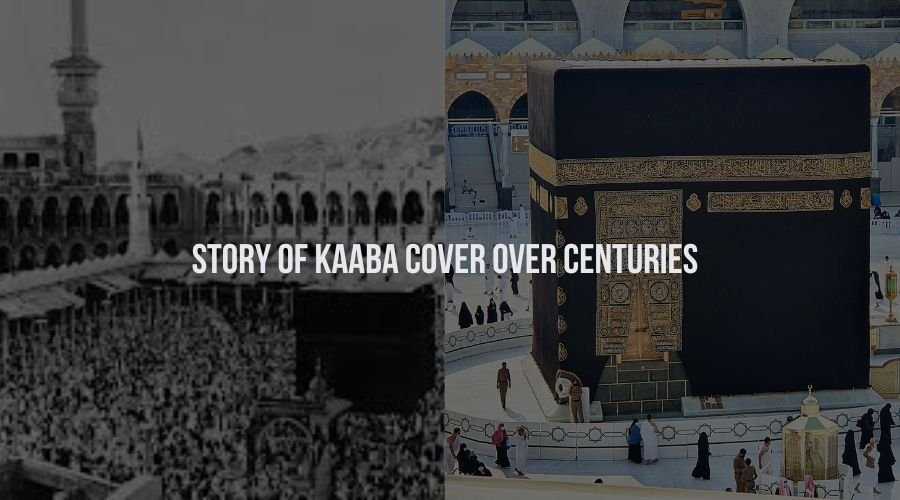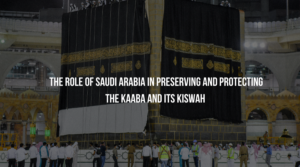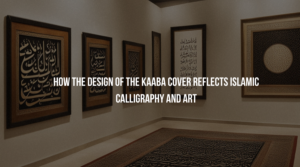Saleh bin Zain Al-Abidin Al-Shaibi, the senior Ka’bah caretaker, received the Kaaba Kiswa cover cloth from Makkah Governor Prince Khalid Al-Faisal on behalf of King Salman on Wednesday, July 22.
Moreover, in accordance with the teachings of Prophet Muhammad and his companions, the new Kaaba Kiswa shall take the place of the old one on the ninth day of Dhul Hijjah.
Every year, on the tenth day of Dhul Hijjah, which is Eid Al-Adha, Kaaba Cover is changed during the hajj season as pilgrims assemble in Arafat to be ready to receive worshippers the following morning.
A white cotton cloth, measuring about two metres in width from all four sides, has been placed over the elevated region of the Kaaba Kiswa, while the lower portion has been raised by roughly three metres by the General Presidency for the Affairs of the Two Holy Mosques.
The action is being taken as a precaution to keep Kaaba Cover safe and clean.
Over the decades, the colours of the Kaaba’s cover cloth have undergone frequent alterations.
Kiswa Colour
The Kaaba Kiswa, or black-coloured cloth, is what covers the Kaaba.
However, as Kaaba Cover has evolved over the ages, it has not always been black.
It is said that during his farewell pilgrimage in the ninth month of Hijri, the Prophet Muhammad covered the Kaaba with a Yemeni cloth after conquering Makkah.
The Kaaba was covered with striped white fabric from Yemen by the Prophet Muhammad, and it was also covered with white cloths by Abu Bakr Siddiq, Umar bin Al-Khattab, and Uthman bin Affan (radhiyallahu ‘anhum).
In the meantime, red brocade was used to cover the Kaaba by Caliph Ibn Al-Zubayr (683-692 AD).
The Kaaba was covered twice, first with white fabric and once with red cloth during the Abbasid dynasty (750–1258 AD), and once again with yellow brocade under the Seljuk Sultan (1037–1194).
The colour of the Kaaba Cover was altered to green by the Abbasid Caliph Al-Nassir (1180–1225 AD), and it has stayed that way to this day.
“The Kaaba was covered once in white, once in red, and once in black, and the choice of colour was based on the financial means in every era,” Dr. Fawaz Al-Dahas, director of the Centre of Makkah History, said to Arab News.
Fabric
Qubati cloth, one of the best kinds of cloth used to cover the Kaaba, was brought from Egypt.
At the period, the most well-known and high-quality fabric was the Yemeni Kaaba Kiswa.
Al-Dahas claimed that although white was the brightest colour, it was not the most resilient due to colour changes with time.
It was replaced by black-and-white brocade and shimla, which were used to wrap Arab tents, because it was impractical and quickly became tattered, filthy, and impure when pilgrims touched it.
The kind of fabric utilised for the Kaaba’s Kiswa was determined by differing financial means, Al-Dahas continued.
After that, he saw that people’s perceptions of the Kaaba Cover changed, and it was replaced by red brocade and qubati Egyptian cotton.
It would also include a musouh, or assortment of rough clothing, or an antaa, a leather mat.
Periodically, the Kiswah would alter as new fabric became available. This was true during the Umayyad, Abbasid, and Rashidun Caliphate periods, the speaker continued.
At the end of the Abbasid era, black was finally chosen because it was resilient and could resist being touched by pilgrims, visitors, and individuals from many civilizations around the world.
History
History sources describe Tubbaa Al-Humairi, the Yemeni king, as the first individual to cover the Kaaba in pre-Islamic times.
They say that when he went to Makkah and entered there dutifully, he covered the Kaaba in pre-Islamic times.
The history of the Kaaba is studied by historians who specialise in the subject. According to some versions, Al-Humairi covered the Kaaba with khasf, a thick cloth, and then Maafir, which was named after an ancient Yemeni city where Maafir cloth was manufactured.
Then he covered it with milaa, rabitah, a thin, delicate material in one piece. Subsequently, he covered the Kaaba with wasael, a Yemeni cloth with crimson stripes.
The successors of Al-Humairi covered the Kaaba with leather and qubati coverings, and many others in the pre-Islamic era saw it as a sacred obligation and a great honour.
According to some stories, the Kaaba Cover was layered on top of the Kaaba at the time and was either separated or removed when it grew too heavy.
Historians attest to the fact that the Prophet Muhammad was the first person in Islam to cover the Kaaba with qubati, a thin white cloth called for the Coptic people that was manufactured in Egypt.
According to the reports, the Prophet Muhammad preserved the ancient Kiswah from the time of the polytheists during the capture of Makkah and did not replace it until a woman burned it while attempting to perfume it with incense. After that, a Yemeni cloth was placed over it.
Subsequently, Muslim rulers and sultans persisted in their efforts to cover and maintain the Kaaba.




